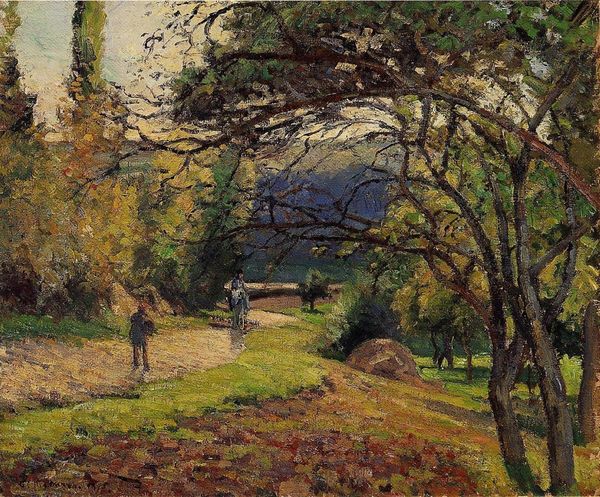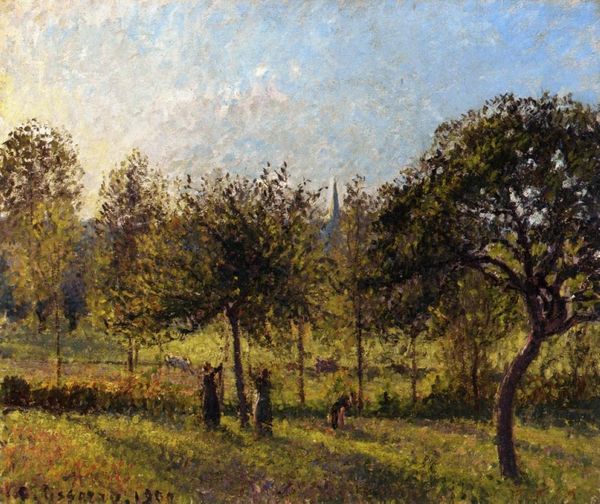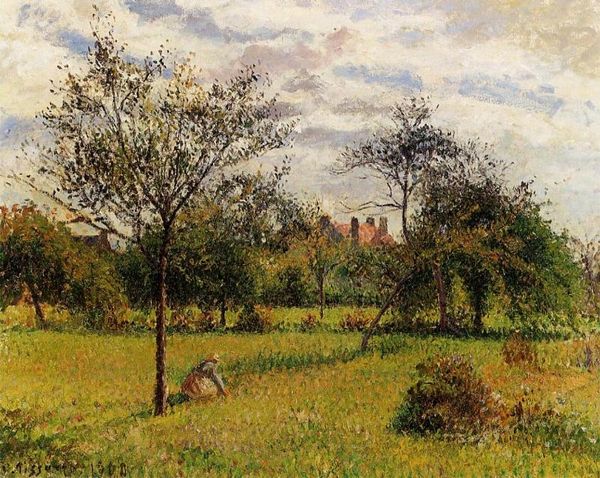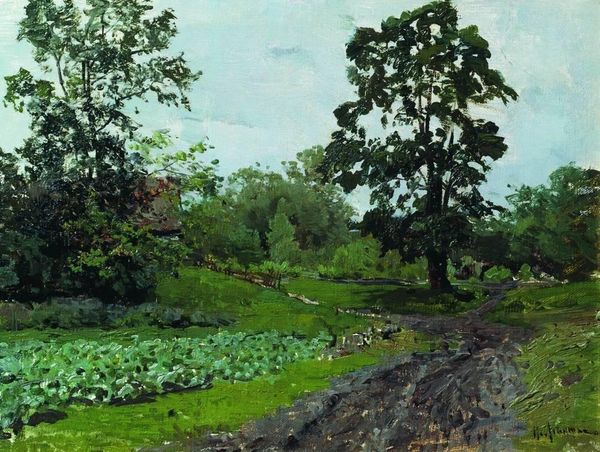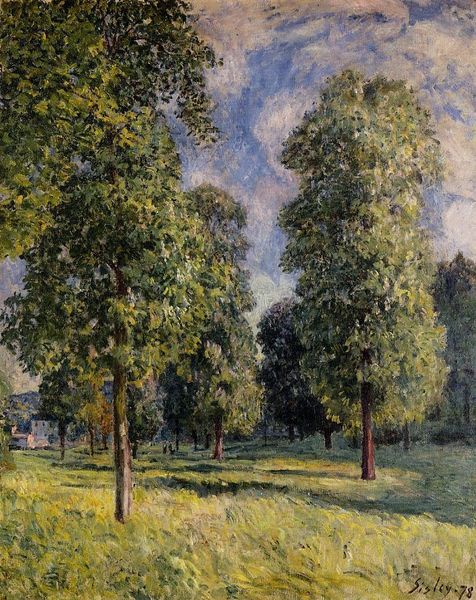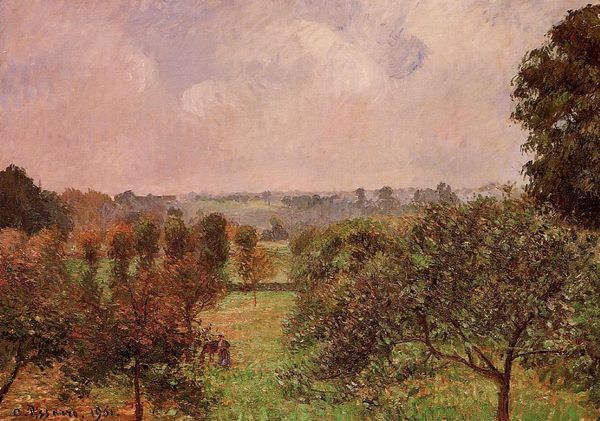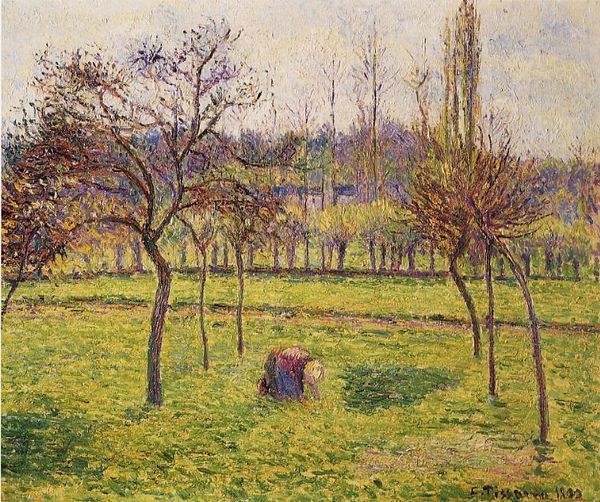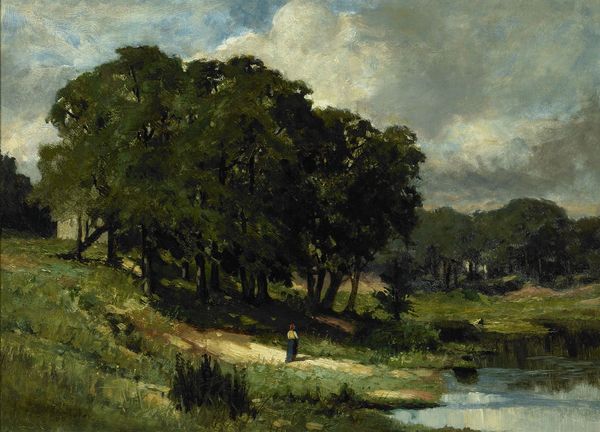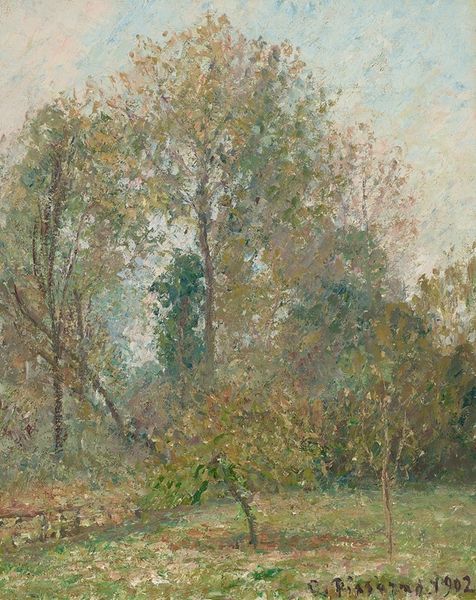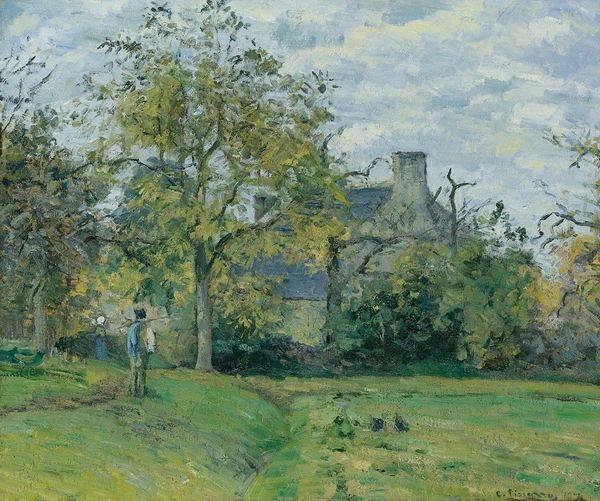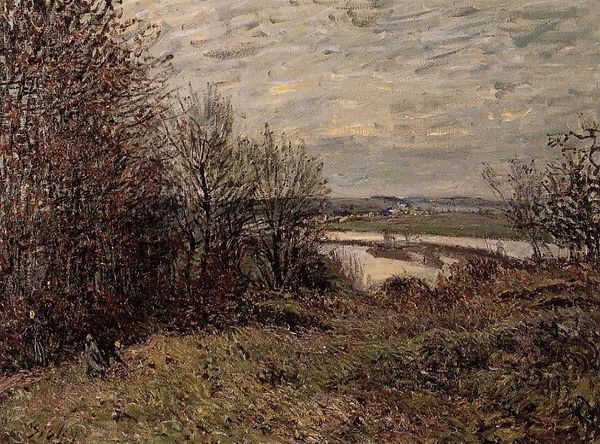
painting, plein-air, oil-paint
#
tree
#
sky
#
painting
#
impressionism
#
impressionist painting style
#
plein-air
#
oil-paint
#
landscape
#
impressionist landscape
#
oil painting
#
natural-landscape
Dimensions: 60 x 80 cm
Copyright: Public domain
Editor: Here we have Camille Pissarro’s “The Cabbage Field, Pontoise” from 1873. It's an oil painting, and it feels so...grounded, like looking at the real, unglamorous side of the countryside. I’m intrigued by how the individual figure seems almost secondary to the land. What do you see in this piece? Curator: I see a potent blend of resilience and human continuity. The cabbage field itself, rendered with such deliberate brushstrokes, isn't merely a landscape; it’s a symbol of sustenance and the enduring connection between humanity and the earth. Look closely at the figure. Do you perceive a sense of anonymity? Editor: Yes, definitely. They're blended in almost. Curator: Exactly. The faceless figure could represent generations tied to this land. The cabbage, an everyday, almost humble vegetable, carries a surprising weight. Consider the history of agriculture and subsistence. What stories do you think this ordinary scene might be trying to tell? Editor: Maybe it’s about the importance of the common person and their labour? I guess I had assumed Impressionism was about something else…like capturing light. Curator: Light is certainly present, but consider it a tool for illuminating a deeper narrative about cycles of life, labour, and the understated beauty of the everyday. Even the colours evoke the richness of the earth and nature’s lifeblood. It reminds me that images accrue symbolic layers over time, connecting us to ancestral experiences. Editor: It’s interesting how a seemingly simple scene can hold so much cultural memory. Curator: Precisely. Art often whispers secrets accessible through visual literacy and historical awareness. Hopefully now, the symbolism resonates beyond the surface.
Comments
No comments
Be the first to comment and join the conversation on the ultimate creative platform.
